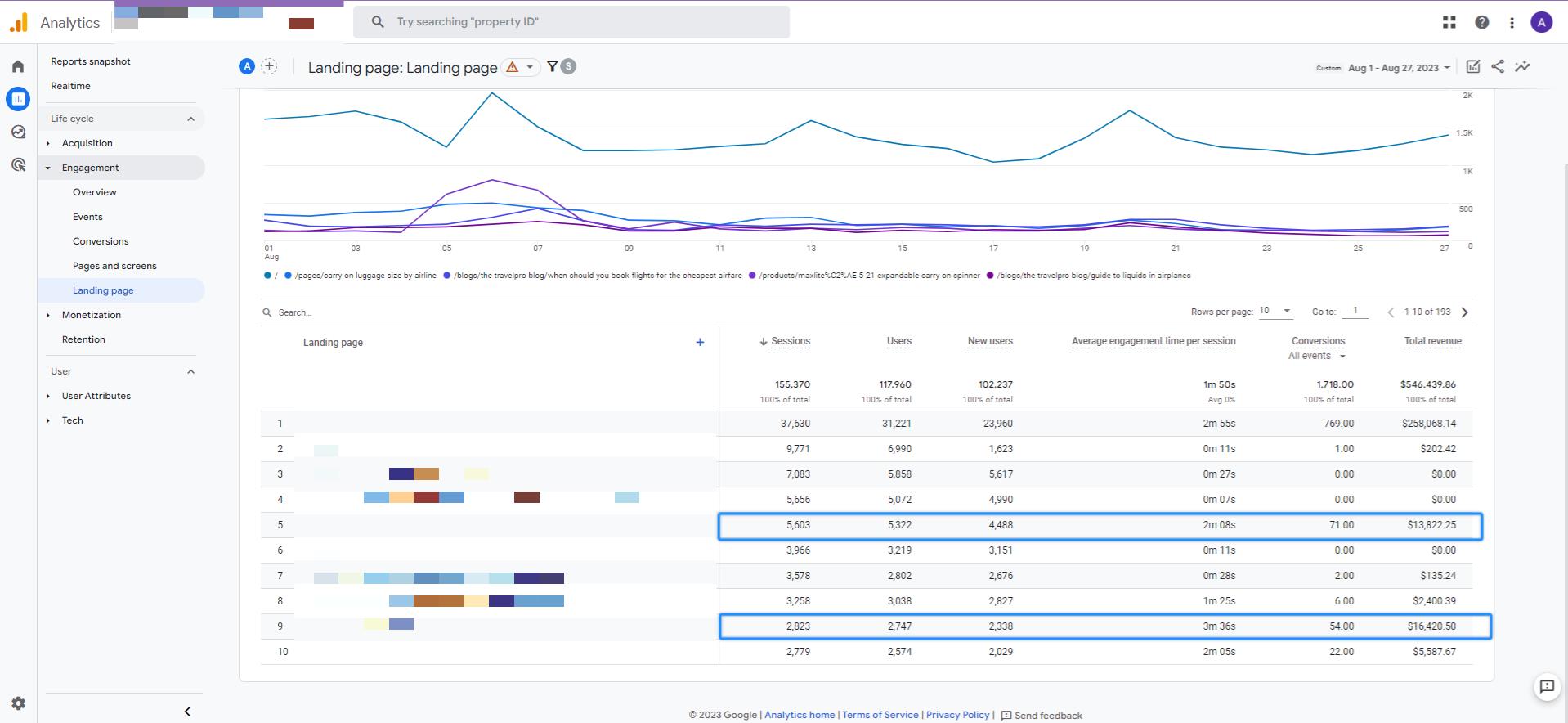Despite their growing popularity, Google Ads Performance Max (PMax) campaigns can often feel like a puzzle with missing pieces.

This is because some important reporting metrics and insights are seemingly hidden, which leads to:
- Limited reporting in PMax campaigns
- Difficulty understanding the source and effectiveness of traffic
- Spending on branded clicks unintentionally
- Misleading campaign-level reports due to the high volume of branded traffic
As a result, you may feel baffled about where your ad spend is going, and what is driving your campaign performance.
We’ve got you covered, though. Here is a three-way solution to avoid such problems:
-
- Detect branded clicks in Performance Max campaigns
- Manage negative keywords effectively
- Create separate campaigns for branded and non-branded terms
All explained below.
Pro Tip: Before we get started, check out: How Analyzify Helps Shopify Merchants with Google Ads Tracking & Performance.
Detecting and Excluding Branded Terms
There are several best practices to keep things under control.
First of all, you should check the search terms of each campaign. While it’s not the easiest thing to do, we’ll show you how here.
Then, you can decide to exclude branded terms from these campaigns – like in the good old days, huh?
It’s not to say that you do not advertise on the brand. Let’s just start with the essentials and have a clear overview of what’s going on, first.
What is Branded Traffic?
Branded traffic refers to the percentage of website traffic that comes from visitors who have included your brand name in their search queries.
For example, if someone searches for “Nike shoes” or “Nike Air Max”, they are using branded traffic, because they are including the name of the company “Nike” in their query.
Is Spending on Branded Clicks Bad?
Spending on branded clicks can be valuable, but the problem is that many merchants are unaware that this is happening.
Google Ads campaigns are often named after product groups or collections, leading you to believe that these campaigns are driving sales from non-branded terms.
In reality, a closer look at the data often reveals that a substantial portion of the traffic and sales comes from branded searches. Understanding this is very important in making informed decisions about your ad spend.
Let’s go through a scenario. You have the following two campaigns:
-
- PMax Product Group iPhone Cases
- PMax Product Group iPad Cases
And the numbers suggest the “iPad Cases” campaign is not doing well with ROI. So you provide more budget into “iPhone Cases” and maybe even stop the “iPad Cases” campaign.
However, here’s a point to think about:
What if most of the “iPhone Cases” campaign’s traffic came from your branded terms?
In that case, it wouldn’t be a fair comparison – which could probably lead to probably a wrong decision.
Therefore, it is not a good idea to judge the campaign performance without getting your hands on the search terms & more details.
It’s a fact that a lot has changed with Google Ads Performance Max campaigns, and we just need to adapt. Let’s learn how we can take the best possible reporting and structure out of this.
Checking Search Terms in Performance Max Campaigns
You should start by reviewing your Google Ads account’s Insights and Search Terms reports.
This will give you a good idea of where your clicks are coming from and whether they’re branded.
You don’t get to see all of them at a table just like in the good old days. But it is still possible.
Here’s how you can check search terms (keywords) in Google Ads Performance Max campaigns:
If you are looking to get a single table to see all search terms and numbers, that won’t happen. The metrics are kind of “hidden” here.
You can use this report not only to understand if the terms are branded but also to generally analyze the performance and structure of campaigns.
You can also detect more negative keywords you don’t want to pay for.
Pro tip: If you are using Enhanced Conversions, make sure to check out our “ Google Ads Enhanced Conversion Guide for Shopify Merchants.”
Reviewing Landing Page Performance Report
Making decisions according to one source is generally not a good idea.
You are always recommended double-checking with other reports and reporting sources.
In this example, you can additionally review the Landing Page Performance report for more insights. The landing pages will also give you an idea of search terms.
You will see which product & collection pages receive the most clicks – and you can evaluate their performance using the conversion-focused metrics.
You can create a custom Google Ads report focused on Performance Max campaigns. Follow our relevant tutorial for more information: How to create PMax Landing Page Custom Report in Google Ads.

You can also create a similar report in Google Analytics 4. The same tutorial will also show you how to do that.

Managing Negative Keywords in PMax Campaigns
Managing negative keywords is very important in improving the performance of your PMax campaigns. This way, you can also invest in clicks that are more likely to convert.
We have already created an informative, step-by-step article on how you can manage negative keywords in Performance Max campaigns.
Please refer to this article to add a list of specific negative keywords to your campaign:
The Ultimate Guide to Negative Keywords in Performance Max Campaigns
Recommended Negative Keyword Lists
To effectively manage negative keywords in your PMax campaigns, you are recommended to create two separate negative keyword lists to start with:
Account-Level Negatives: General negative keywords irrelevant to your business or products.
Branded Terms: Branded terms that you want to exclude from specific PMax campaigns.
You can surely come up with more negative keyword lists depending on your business.
Another good example could be the cross-campaign negatives.
If you want to ensure your “iPad Cases” campaign won’t receive any clicks from “iPhone Cases”, you can create negative keyword lists for both and apply them to the opposition campaigns.
Create Separate Performance Max Campaigns
Consider creating a different PMax campaign; one focused solely on brand terms.
This way, you can clearly see the performance of each and make data-driven decisions.
To make it work, you need to make sure that you exclude your branded terms from the other PMax campaigns so that all the clicks & impressions fall into Branded PMax campaign.
And that’s how you can effectively manage negative keywords in your PMax campaigns.
Please note that there isn’t any single truth in digital advertising. One can be successful ultimately with different methods and techniques.
Our ultimate goal here is to have a transparent reporting & Google Ads structure so that you know what’s happening inside the campaigns.

































